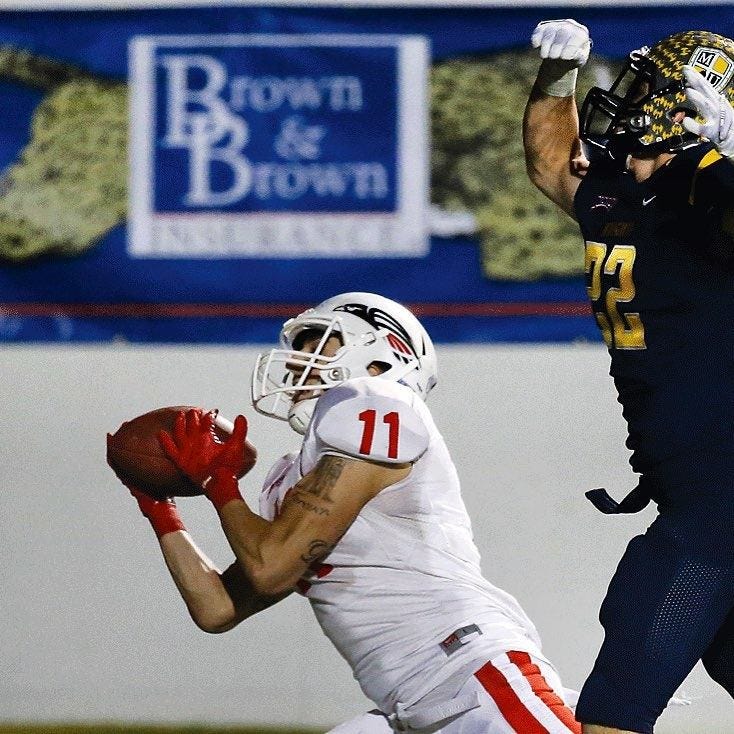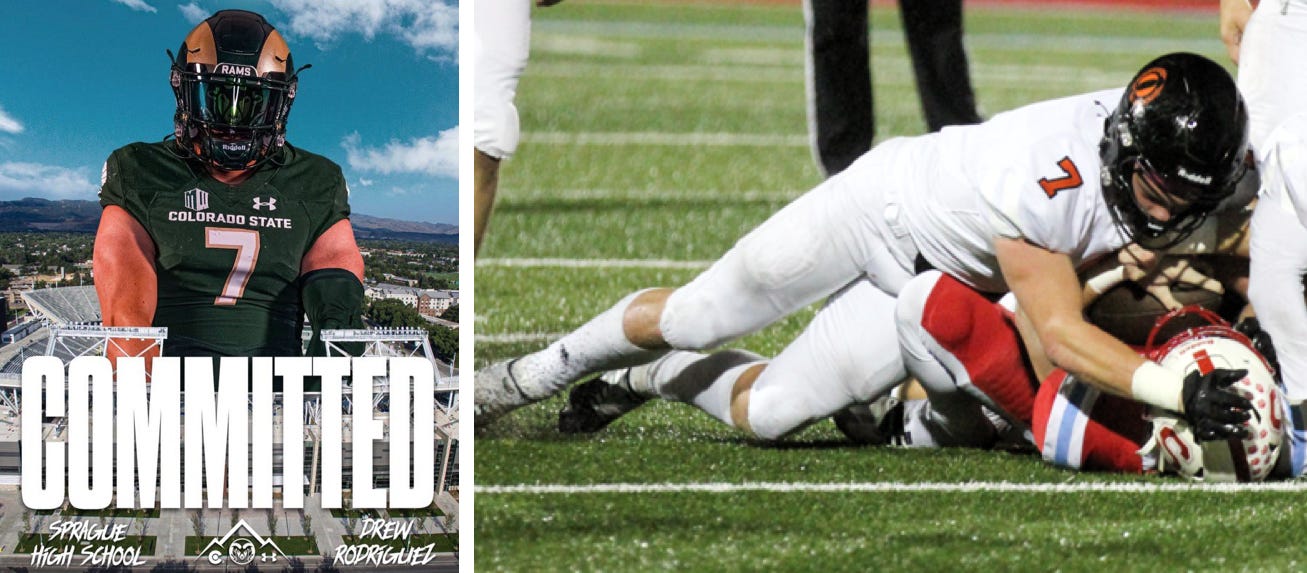The Changing Face of Oregon Prep Football
Opinion/Analysis: HS football today looks way different than it did in the 1970s
As a young man growing up, I wasn’t the most talented or athletic football player. The son of a longtime coach, I did have some advantages that many kids didn’t have during the 1970s. For those needing a time reference, think of the films Rudy or Remember the Titans. That’s my football era.
Available during that bygone era was Boys Club football, which offered a full-contact version of the sport to kids beginning in the fifth grade. Not all kids played at that level, so I feel fortunate to have had the experience.
My late father Jerry, and legendary South Salem coach Marv Heater founded the Salem Football School, which offered a week’s worth of gridiron training to participants, as well as some time with college coaching staffs that were invited in to provide additional instruction. It was a great opportunity for grade school, junior high, and young high school players. Again, a leg up over many other young footballers.
By my junior year of high school in 1976, weight training opportunities were offered in PE classes. Actual free weights, instead of just the “universal gym” weights. There was also “circuit training” to improve cardiovascular fitness through a series of activities.
At the time, most of this was the most cutting-edge preparation available for the sport I had loved since about the age of seven.
In the 1960s and 70s, there was still time to be a kid—riding your Schwinn Sting Ray bicycle all over the neighborhood as a youngster until the street lights came on. Summers spent picking strawberries and beans for spending money. Some of us also obtained agricultural-based jobs as teens for the entire summer to work out muscles and provide some gainful employment.
In the 1970s, the blend of work, sports, and play were a normal routine for athletes. Football formally in high school began with daily double practices in August, followed by a fall schedule of games. Only one team from each league qualified for the post season. It was a glorious time to be a football player.
Today, preparation for football looks much different and involves a markedly higher level of commitment. The run-oriented game from my youth has been supplanted by a high-octane passing offense that has been in style for a quarter century. The timing and execution require additional preparation.
Granted, football has changed radically in many regards. In the 1970s, the switch was being made from the old suspension helmets—which looked like a hard hat on the inside—to the air-fitted helmets commonly used today. Medical treatment has improved greatly. Knee injuries—which ended careers instantly back in the day—can now be repaired non-invasively. And the wear and tear of the game on a muddy, slippery grass field has been replaced with a modern, field-turf surface.
And for the players, participation now starts earlier than the fifth grade. Kids down to the third grade can strap on the pads and helmets to square off on the field. There are also options for playing flag football at an even younger age to learn some of the game basics. While some school districts no longer offer football at the middle school/junior high level, the youth football organizations fill the void, frequently working with their local high school coaches on all aspects of the game.
There were city championships to be had in youth football nearly 50 years ago, now there are regional and state titles to be won these days. It all takes time and money.
For high school players—the options for training and improvement have exploded. There are specialized camps offered by position—for linemen, for quarterbacks, for running backs—and more. Colleges and universities provide proving grounds for the prep players as well. Western Oregon University in Monmouth offers its Northwest Showcase in June (a brief on this year’s event is coming soon). Players—for a relatively modest fee—need only show up with cleats, shorts and a tee shirt to take part in drills, competitions by position, and coach evaluation of their speed, agility and quickness.
WOU also offers a team camp that prep coaches sign up for to give their players even more personalized instruction at a higher cost.
These sorts of “camp” offerings provide players with exposure—and an increased chance of becoming a player at the college level.
Other ways to gain exposure come from the increasingly popular seven-on-seven passing teams established across the country. Oregon’s elite teams compete successfully against teams from larger states, and the results are carefully recorded, then shared online through scouting services. Teams travel to locations around the nation for almost the entire year. To be a part of a national program isn’t cheap, and usually requires a bit of fundraising for both the team fees and affiliated costs like air travel, meals and hotel rooms.
Former North Salem football player Dylan Young—who was a star for Southern Oregon University’s 2014 NAIA National Championship Team and has experience in the arena and Canadian football leagues—is also a athletic trainer, and part owner of the Beaverton-based Alpha Football 7 on 7 organization. He says increased off-season training, especially seven-on-seven for players, is more than a suggestion for those wanting to play in college.
“The demand on kids to train & play travel 7-on-7 is high,” admits Young.
“Most of the kids now that are being recruited by the top schools in the country are attending events through-out the year.”
Young says training is now more than lifting weights—and includes performance training that helps players to move more instinctively on the field, improving their performance during games. He says that even the assessment of players has changed from more than height, weight and speed. Scouts are willing to overlook small size for players like a Bryce Young if intangibles such as explosiveness and change of direction are among their traits.
While the experience varies from program to program, a parent of one player told me the 7-on-7 competition can be a real boost for some kids who might not otherwise be noticed.
“The coaches are amazing. Absolutely amazing,” he says with praise of his son’s 7-on-7 program.
“They preach, we aren’t here to make you good 7-7 players, we’re here to make you good football players.’”
“We see guys recruiting stock go up every year because of their 7-on-7 performances,” he says decisively.
Note that the commitment to these passing programs can clash with additional prep sports participation. Former Sprague High all-star WR/DB Drew Rodriguez—a two way all-state honoree—missed a game or two for the Olympians’ basketball team his junior year to take part in a passing league event. Drew graduated from Sprague early—in January—to begin classes at Colorado State University, where he will play defense for the Rams. He did not suit up for the Olys basketball season at all this past year.
Coaches still encourage players to participate in multiple sports—but the intrusiveness of the “exposure” element these camp and competition options provide does have an impact on the athlete’s overall playing schedule. Still, the rewards are obvious.
West Salem High’s Trent Ferguson was a highly regarded basketball player for the Titans his sophomore year, averaging double-digits in points. His junior year this past season, Trent came out for the West football team, sharing with me during summer camp that he was trying to follow the advice of coaches to take part in multiple sports. At 6-7, and about 300 pounds, he is quite the physical specimen. And even though he only started a handful of games at left tackle for the Titans last season, he was offered a spot with the Oregon Ducks program, which he promptly accepted.
Not every athlete has Division One physical tools, but being noticed by the “scouting services” (24-7, Rivals, MaxPreps, ESPN, Prep Redzone, et. al) does help. Colleges and universities consult these ratings, which gives players unparalleled visibility. Following their 2022 season, star players from North Salem and South Salem received scholarship inquiries this past fall and winter from solid, but lower tier programs—and they happily embraced offers from schools such as Portland State and Southern Oregon. In our internet-based world, the system has worked.

Current prep players hope for similar success this year, and look forward to positive reports about their development from the scouting services. Parents also keep an eye on those reviews which include ratings from one to five stars. Three stars are a goal for many players, as that all but guarantees a college scholarship look. So the players go to camps, compete in passing events, and attend all-star football events like the Les Schwab Bowl in McMinnville this summer. That game now includes non-graduates on its rosters, all selected by the coaches.
The sport of football remains my favorite of all athletic endeavors. I still get chills or choke up or laugh in celebration during the course of a season. All those years watching my father coach his teams has left its mark. Even though so much about the game has changed, it still is both exciting and appealing.
The athleticism of football players is always evident and admirable, regardless of the era. While the changes in the game from my time on the field are elements I can’t necessarily relate to, I understand the drive of teens to keep on playing.
Good luck to this latest edition of footballers. It is a brave new world, indeed.












Well done Mark! As I also walked in the shoes of being a player/coach in the 60s,70s,80s I have seen many changes in high school football, mostly good, but some questionable. I support the multiple sport athlete even though the pressure to do all for all has increased.
Congratulations to you, Mark Gilman, for being awarded the Media Award by the Oregon Athletic Coaches Association! Your dad Jerry would be very proud of you!
Mark I agree with Coach D. Jonhson and most of your written comments in this article. From 1984 to 1994 I cached youth Football for the Salem Boys club "Dolphins" with Jeff Hilfiker we had seven (7) Salem Boy's club Football Championships for the City of Salem, OR. I played Football through Grade School and High School, PIL Champions 1966. But I learned so very much about coaching Football and the game from your Dad (Jerry Gilman) and Coach D. Jonhson at the Salem Football School at South Salem High School. I have always been the "other side of the tracks guy". But have much respective for Coach J. Gilman and Coach D. Jonhson for helping me be a better coach so great-full to have had that experience.